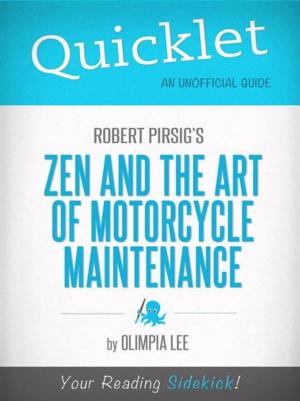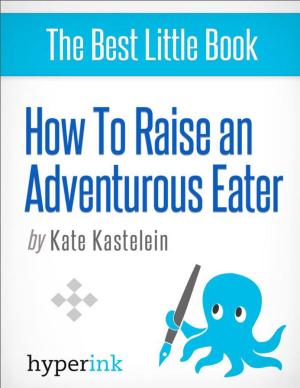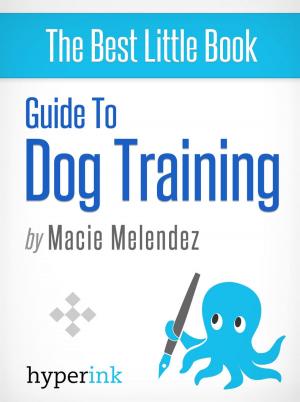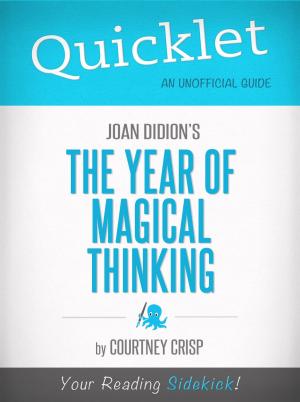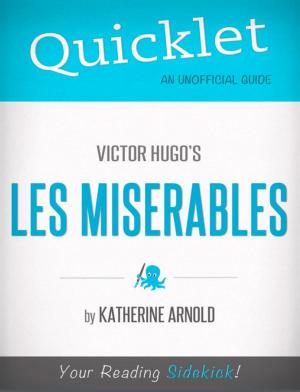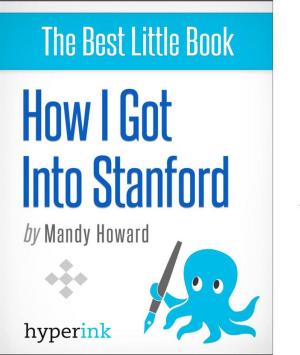Learning to Write Superhero Stories: Using the Best and Worst Superhero Movies to Write Better Novels, Comics, and Screenplays
Nonfiction, Reference & Language, Reference, Guides & Handbooks| Author: | Brian McKenzie | ISBN: | 9781614645771 |
| Publisher: | Hyperink | Publication: | October 23, 2012 |
| Imprint: | Hyperink | Language: | English |
| Author: | Brian McKenzie |
| ISBN: | 9781614645771 |
| Publisher: | Hyperink |
| Publication: | October 23, 2012 |
| Imprint: | Hyperink |
| Language: | English |
Many writers suffer from the depressing misconception that popularity and critical acclaim are mutually exclusive. Encouragingly, from 2000-2012, 20 superhero movies scored above 70 percent on Rotten Tomatoes and 17 of them grossed more than $200 million at the box office. Hopefully, the enclosed reviews of four great superhero movies and two of the genreâs most notorious disasters will help you identify ways to distinguish your writing, sharpen your skills, and broaden the appeal of your work.
EXCERPT FROM THE BOOK
The Amazing Spider-Man
1. To the extent that you cover a superhero origin story, Iâd recommend focusing on things and approaches we havenât seen much of before. I think it would have helped to either spend less time covering the origin story or make it more different than Spider-Man 1. That said, I thought ASMâs approach to the death of Uncle Ben was smoother and more thematically effectiveâwhen Peter has the opportunity to stop the robber, thereâs a plausible and immediate threat to bystanders. Peter declines and Ben gets killed seconds thereafter. This makes Peterâs motivation for a life-changing decision (becoming a superhero) more plausible. In contrast, in Spider-Man 1, Peter gets torn up because he doesnât get involved in a relatively minor situation with a police officer present, with only a faint connection between Peter Parker letting the robber go and the robber killing a civilian.
1.1. Peter plays a more active role acquiring superpowers. He was only in the laboratory because he stole an ID and figured out how to thwart a keypad. I think the scene develops him more than just getting lucky at the science fair in Spider-Man 1. (Likewise, he makes his own webslingers instead of getting them from the spider-bite).
2. Beware the idiot ball â make sure there are believable consequences to actions. Peter Parker displayed his superpowers in public so many times that I think his classmates would have to be idiots not to notice something was amiss. (For example, the NBA-caliber dunk? Or breaking a goalpost with a football? Or lifting enormous Flash Thompson by the neck?) When characters make decisions, there should be consequences. For example, if the character is reckless with his powers, maybe other characters come closer to figuring out whatâs going on. Or at least start asking difficult questions.
3. Speaking of consequences, I thought the crane scene was kind of cute. (Peter saves a construction workerâs kid and the construction worker later pulls in favors at the climax to help Spider-Man). It helps build a contrast between Spider-Manâs decidedly limited means and, say, the lavishly-funded Avengers or X-Men. I think itâs also a more subtle and effective way of showing heâs more of an everyman hero than we saw in previous Spider-Man movies (e.g. subway passengers throwing themselves between Dr. Octopus and a crippled Spidey felt sort of hokey to me).
Buy the Book to Read More!
Many writers suffer from the depressing misconception that popularity and critical acclaim are mutually exclusive. Encouragingly, from 2000-2012, 20 superhero movies scored above 70 percent on Rotten Tomatoes and 17 of them grossed more than $200 million at the box office. Hopefully, the enclosed reviews of four great superhero movies and two of the genreâs most notorious disasters will help you identify ways to distinguish your writing, sharpen your skills, and broaden the appeal of your work.
EXCERPT FROM THE BOOK
The Amazing Spider-Man
1. To the extent that you cover a superhero origin story, Iâd recommend focusing on things and approaches we havenât seen much of before. I think it would have helped to either spend less time covering the origin story or make it more different than Spider-Man 1. That said, I thought ASMâs approach to the death of Uncle Ben was smoother and more thematically effectiveâwhen Peter has the opportunity to stop the robber, thereâs a plausible and immediate threat to bystanders. Peter declines and Ben gets killed seconds thereafter. This makes Peterâs motivation for a life-changing decision (becoming a superhero) more plausible. In contrast, in Spider-Man 1, Peter gets torn up because he doesnât get involved in a relatively minor situation with a police officer present, with only a faint connection between Peter Parker letting the robber go and the robber killing a civilian.
1.1. Peter plays a more active role acquiring superpowers. He was only in the laboratory because he stole an ID and figured out how to thwart a keypad. I think the scene develops him more than just getting lucky at the science fair in Spider-Man 1. (Likewise, he makes his own webslingers instead of getting them from the spider-bite).
2. Beware the idiot ball â make sure there are believable consequences to actions. Peter Parker displayed his superpowers in public so many times that I think his classmates would have to be idiots not to notice something was amiss. (For example, the NBA-caliber dunk? Or breaking a goalpost with a football? Or lifting enormous Flash Thompson by the neck?) When characters make decisions, there should be consequences. For example, if the character is reckless with his powers, maybe other characters come closer to figuring out whatâs going on. Or at least start asking difficult questions.
3. Speaking of consequences, I thought the crane scene was kind of cute. (Peter saves a construction workerâs kid and the construction worker later pulls in favors at the climax to help Spider-Man). It helps build a contrast between Spider-Manâs decidedly limited means and, say, the lavishly-funded Avengers or X-Men. I think itâs also a more subtle and effective way of showing heâs more of an everyman hero than we saw in previous Spider-Man movies (e.g. subway passengers throwing themselves between Dr. Octopus and a crippled Spidey felt sort of hokey to me).
Buy the Book to Read More!


